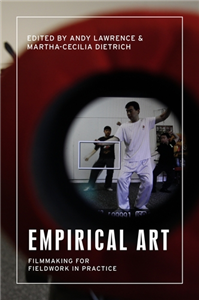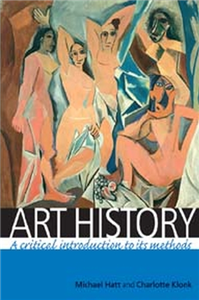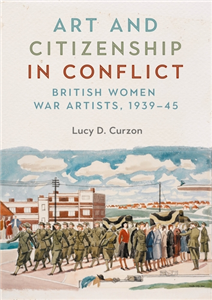Your Search Results
-
Wickwick Ltd
Wickwick is a small Finnish publishing company specialized in children's picture books, novels, and poems. The books reflect a warm and tolerant view of life, which offers a peaceful background for enjoying stories, both for children and adults. Current themes include: Survival, Generations, Helping, Power, Environment, and War & Peace.
View Rights Portal
-
Promoted ContentJanuary 1987
Nix wie Ärger mit Computern
...und andere Leidensgeschichten vom Segen des Fortschritts. Satirische Betrachtungen eines Überlebenskünstlers
by Buchwald, Art / Übersetzt von Wichmann, Hardo
-
Promoted Content1986
Schlafmützen aller Länder, vereinigt euch!
Neue Vorschläge zur Erlösung der Welt - von dem besten Satiriker aller Zeiten
by Buchwald, Art
-
 Trusted Partner
Trusted Partner
-
 Trusted Partner
Trusted Partner
-
 Trusted Partner
Trusted Partner
-
 Trusted Partner
Trusted Partner
-
 Trusted Partner
Trusted Partner
-
 Trusted Partner
January 1988
Trusted Partner
January 1988Das Tor zur himmlischen Aussicht
Roman
by Trenhaile, John / Übersetzt von Wichmann, Hardo
-
 Trusted Partner
Trusted Partner
-
 Trusted Partner
Trusted Partner
-
 Trusted Partner
Trusted Partner
-
 Trusted Partner
Trusted Partner
-
 Trusted Partner
September 1997
Trusted Partner
September 1997Ich bin ein Hund!
Schlag mich auf...
by Spiegelman, Art / Übersetzt von Thomas, Nikolaus
-
 Trusted Partner
October 2007
Trusted Partner
October 2007Das große Buch der chinesischen Astrologie
Was der Mond uns über unsere Männer, Frauen, Liebsten, Kinder, Kollegen und über uns selbst verrät
by Lau, Theodora / Englisch Wichmann, Hardo
-
 Trusted Partner
February 1991
Trusted Partner
February 1991Bücher. Theater. Kunst
by Rainer Maria Rilke, Richard Mises
Peter Michel. Giovanni neues Buch von Novellen von Siegfried Trebitsch. Der Moloch, Ludwig Jacobowski. Sonnenblumen. Hermine ungarischen Lenz, Ein Buch Wichmann, Aus dem Leben einer jungen Dame unserer Zeiit, von von Richard Schaukal. Sagenhafte Sinnspiele. Segantini. Das weiße Haus. Thomas Manns Buddenbrooks. Das Jahrhundert des Kindes. Jörn Uhl, Roman von Gustav Frenssen. Die Stillen im Lande. Drei Erzählungen aus dem Winkel von Carl Worms. Ein der Renaissance. Zwei nordische Frauenbücher. Fritz Rassow, Barrabas, Zwei Frauen - Morgen und Abend. Weltuntergang, Roman von Jakob Wassermann. Nordische Bücher II. Lucas Cranach von Richard Muther. Sonnenblumen. Küsse von Anton Renk. Im Frühlingssturm, Erlebtes und Erträumtes von Hans Benzmann. Schmetterlinge, Gedichte von Albrecht Mendelssohn-Bartholdy und Carl von Arnswaldt. Träume des Lebens von Franz Josef Zlatnik. Rudolph Christoph Jenny, Not kennt kein Gebot. Anne-Marie von von Preuschen. Bodo Wildberg (Harry Louis von Dickinson). Aus Traum und Leben, Gedichte von Martin Boelitz / Poggfred, Kunterbuntes Epos in zwölf Cantussen von Detlev Freiherrn von Liliencron. Welt und Seele, Neue Gedichte von Paul Wilhelm. Hohenklingen. Gustav Falke, Neue Fahrt, Gedichte. Friedrich Adler, Neue Gedichte. Konsonanzen und Dissonanzen, Gedichte eines Musikers. Hermann Hesse, Eine Stunde hinter Mitternacht. Elsa Zimmermann, Gedichte, Der Tag hat sich geneigt. von Kraft und Schönheit von Max Bruns. Was ich suche, Gedichte von Emil Faktor. Peter Michel, von Friedrich Huch. Mieze Edith Nebelong. Peter Michel, Roman von Friedrich Huch. Bunt ist das Leben, Novellen von Ernst Hardt. Karin Michaelis, Das Schicksal der Ulla Fangel. Ellen Olestjerne, Eine Lebensgeschichte von F. Gräfin Reventlow. Ausgewählte Gedichte Bänkelsang vom Balzer auf der Balz. Drei Selbstanzeigen. Georg Hirschfeld und Agnes Jordan. Demnächst und gestern. Der Wert des Monologes. Noch ein Wort über den "Wert des Monologes". Pelleas und... Maurice Maeterlinck..........
-
 Trusted Partner
Trusted Partner
-
 Trusted Partner
Humanities & Social SciencesJuly 2025
Trusted Partner
Humanities & Social SciencesJuly 2025Empirical art
Filmmaking for fieldwork in practice
by Andy Lawrence, Martha-Cecilia Dietrich
Empirical art: Filmmaking for fieldwork in practice is an insightful exploration of what the craft of filmmaking brings to social science research. Providing creative avenues on how to narrate encounters, relationships, and experiences during fieldwork, this comprehensive volume offers a rich tapestry of theoretical explorations and explorative methodologies. Skilfully connecting the worlds of ethnography, art and cinema, the contributors in this book act as a compass for filmmakers and researchers venturing to use a camera and microphone to relate and narrate their research collaborations and fieldsites. Drawing from the authors' extensive experience in disciplines like social anthropology, environmental humanities, and political science, "Empirical Art" breaks down the intricate process of crafting ethnographic films that departs from the researcher's subjectivity. Covering aspects of filmmaking from conceptualisation to production and distribution, readers are equipped with a treasure trove of collaborative techniques, innovative approaches, and ethical considerations necessary to generate and examine storytelling practices in contemporary fields of study. The authors discuss the significance of the multiple roles that technologies of filmmaking play in reflecting on cultural practices, social dynamics, and (beyond) human storytelling and their transformative potentials. Whether a seasoned filmmaker, an aspiring ethnographer, or an academic seeking new dimensions for their research, Empirical Art serves as a guide to integrating visual storytelling, cinema craft and empirical research.
-
The ArtsMarch 1905
Concerning the Spiritual in Art
by Wassily Kandinsky
A pioneering work in the movement to free art from its traditional bonds to material reality, this book is one of the most important documents in the history of modern art. Written by the famous nonobjective painter Wassily Kandinsky (1866–1944), it explains Kandinsky's own theory of painting and crystallizes the ideas that were influencing many other modern artists of the period. Along with his own groundbreaking paintings, this book had a tremendous impact on the development of modern art. Kandinsky's ideas are presented in two parts. The first part, called "About General Aesthetic," issues a call for a spiritual revolution in painting that will let artists express their own inner lives in abstract, non-material terms. Just as musicians do not depend upon the material world for their music, so artists should not have to depend upon the material world for their art. In the second part, "About Painting," Kandinsky discusses the psychology of colors, the language of form and color, and the responsibilities of the artist. An Introduction by the translator, Michael T. H. Sadler, offers additional explanation of Kandinsky's art and theories, while a new Preface by Richard Stratton discusses Kandinsky's career as a whole and the impact of the book. Making the book even more valuable are nine woodcuts by Kandinsky himself that appear at the chapter headings. This English translation of Über das Geistige in der Kunst was a significant contribution to the understanding of nonobjectivism in art. It continues to be a stimulating and necessary reading experience for every artist, art student, and art patron concerned with the direction of 20th-century painting.
-
 Trusted Partner
The ArtsMarch 2006
Trusted Partner
The ArtsMarch 2006Art history
A critical introduction to its methods
by Michael Hatt, Charlotte Klonk
Art History: A critical introduction to its methods provides a lively and stimulating introduction to methodological debates within art history. Offering a lucid account of approaches from Hegel to post-colonialism, the book provides a sense of art history's own history as a discipline from its emergence in the late-eighteenth century to contemporary debates. By explaining the underlying philosophical and political assumptions behind each method, along with clear examples of how these are brought to bear on visual and historical analysis, the authors show that an adherence to a certain method is, in effect, a commitment to a set of beliefs and values. The book makes a strong case for the vitality of the discipline and its methodological centrality to new fields such as visual culture. This book will be of enormous value to undergraduate and graduate students, and also makes its own contributions to ongoing scholarly debates about theory and method. ;
-
 Trusted Partner
The ArtsOctober 2025
Trusted Partner
The ArtsOctober 2025Art and citizenship in conflict
British women war artists, 1939–45
by Lucy Curzon
Art and Citizenship in Conflict examines the work of women war artists in order to highlight the complexity of citizenship and gender in Britain during the Second World War. Evelyn Dunbar, Mary Kessell, Ethel Gabain, Stella Schmolle, and Laura Knight, among others, were commissioned by the War Artists' Advisory Committee (WAAC) to document the millions of women who took up sometimes unconventional roles-in agriculture, the auxiliary services, and manufacturing, among others-to support the British war effort. Indeed, their prints, drawings, and paintings were part of a broader scheme to uphold morale and promote much-needed citizen involvement on the home front. While there is growing interest, the importance of their remit in the history of the Second World War and the quality of their artistry have nonetheless not yet secured them a significant place in scholarship. Art and Citizenship in Conflict seeks to amend this gap while also broadening approaches to the study of war itself.




















